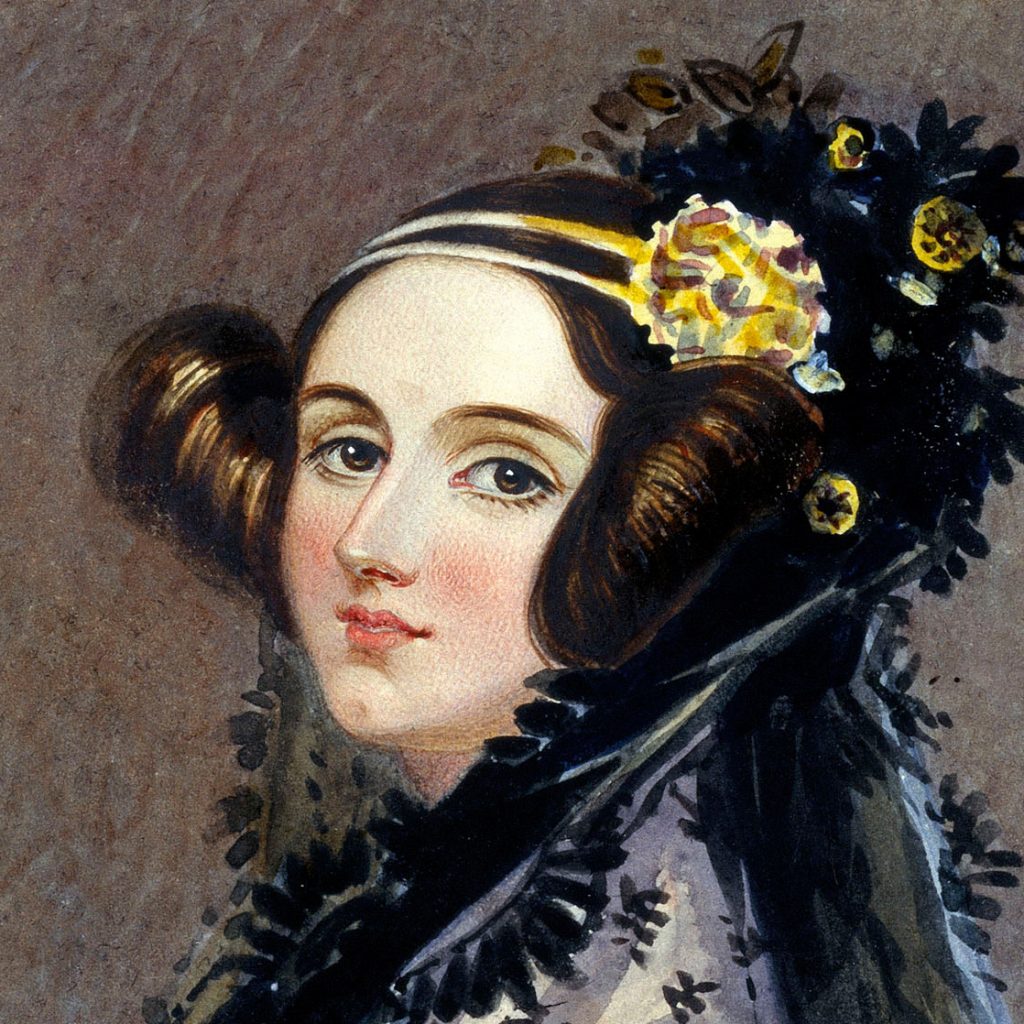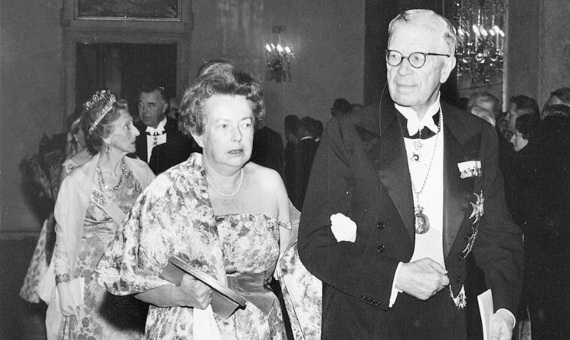Gender equality and women’s empowerment remain a key challenge for today’s societies, as recognized by the UN in its Millennium Development Goals. Despite accounting for almost 50% of the world’s population, for many women pursuing an education or landing a decent job remains a major challenge. However, many countries have already put into place a social mechanism to prevent gender-based workplace discrimination. But, how did women start claiming their space in what once were traditionally male-only professions? In this article, we take a look at the life of 8 women who went on to become prominent figures in different STEAM fields (STEAM stands for science, technology, engineering articles and mathematics) and whose talent opened the doors to different scientific professions for other women.
Ada Lovelace: the world’s first computer programmer
One of many figures in the history of science whose work has earned posthumous recognition is Ada Lovelace, a talented mathematician who is widely regarded as the world’s first computer programmer. Ada Lovelace translated a document published in a French magazine about Charles Babbage’s analytical machine. In the explanatory notes she appended to the translation, Ada included a set of instructions to calculate Bernoulli’s numbers. These instructions have become regarded as the first computer program in history.

Born in the early 19th century, Ada Lovelace enjoyed a fairly unusual scientific education thanks to her mother. Lady Byron had herself studied mathematics, science and astronomy, supported the abolition of slavery and fought for women’s rights, She did not only force Ada to study mathematics, but also encouraged to pursue her professional interests in science and mathematics, two fields clearly dominated by men at the time.
Marie Curie: the first woman honored with two Nobel Prizes
Marie Curie (1867-1934) was not only the first woman to win a Nobel prize, but the only woman to win it twice and the first person to be honored in two different scientific disciplines, Physics and Chemistry. In addition to being a researcher, Curie was a woman of action and during the First World War, she helped to equip ambulances with x-ray units, and often drove them to the front line herself.
Born in Warsaw, she studied clandestinely at the so-called “Flying University“, an underground educational enterprise, open to women, whose purpose was to provide Polish youth with an opportunity to study in their own language. As its name implies, the university often changed locations to escape Russian control. She finished her studies in Paris. Despite the obstacles she had to overcome to complete her education and develop her research, she continued working until the end of her days. She died from a rare condition linked to high levels of radiation exposure.
Alice Catherine Evans: the Pioneer of Safe Milk
Alice Catherine Evans (1881 – 1975) became the first female recipient of a scholarship to undertake studies in bacteriology at University of Wisconsin-Madison and the first woman elected president of the Society of American Bacteriologists, in recognition of her discovery of brucella, the bacteria that causes brucellosis, also known as Malta fever, in a series of mammal species, including humans.

Born in Pennsylvania to a family of farmers, Evans began working as a rural teacher. She was introduced to the study of natural sciences through a course that Cornell University offered free of charge to rural teachers, and specialized in bacteriology.Due to a lack of resources, instead of pursuing a doctorate degree she accepted a position as a researcher with the Dairy Division of the United States Department of Agriculture. There, nobody expected the person who went by the name of “A. Evans ” to be a woman, and yet 3 years later she became the first woman to sign a permanent employment contract with the USDA.
Maria Goeppert-Mayer: the woman who reached the heart of the atom
In 1963, 60 years after Marie Curie won her Nobel prize in Physics, Maria Goeppert-Mayer (1906-1972) became the second woman in history to win a Nobel Prize.She developed a mathematical model that explained how the atomic nucleus is made up by a system of shells, and that the “water droplet” model that prevailed among the scientific community until then was wrong.

She fell in love with quantum physics at a conference by Max Born she attended while she was pursuing her mathematical studies.
She later went on to work hand in hand with another great physicist, Enrico Fermi and took part in one of the scientific milestones of her time: Tue Manhattan Project. However, she had to overcome many obstacles during her career, and it took Maria many years to get a paid job at an academic institution while following her husband, Joseph Mayer, on his academic journey through the United States.
Dorothy Hodgkin: The Woman Who Saw Penicillin
Dorothy Hodgkin (1910-1994) became the first British woman to win a Nobel Prize in science. The prize recognized her work in developing of a pioneering technique to visualize biomolecules using X-rays, which allowed to understand the 3D structure of penicillin, which opened the door to the development of thousands of modern antibiotics. She was also the first person to lay eyes on biomolecules as essential as vitamin B-12 (1956) and insulin (1969).

Despite earning a chemistry degree from the University of Oxford and completing a Ph.D. at the University of Cambridge, in 1964, the British press reported about her achievement with headlines such as “Oxford housewife wins the Nobel Prize“.
Hedy Lamarr: inventor of “wireless” technology, actress and spy
Hedy Lamarr (1914-2000) invented a technique for spread spectrum communications, key to many wireless communications systems of our present day. Hedy Kiesler changed her name after divorcing her first husband, a tycoon who supplied illegal weapons to fascist governments in Europe. It was precisely by listening to her former husband’s conversations that she learned what was necessary to develop her invention, patented in 1942.
According to her biographer, Stephen Michael Shearer, her profile as a popular and stunningly beautiful may have slowed down the success of the system she invented because “at that time nobody took a beautiful woman seriously in intellectual matters.”
Jane Goodall: one of the first female primatologists, ethologists and anthropologists
Jane Morris Goodall (1934), the world’s foremost expert on chimpanzees, gave up a comfortable life in London to venture into the Tanzanian jungle and follow her early infatuation with chimpanzees, under the lead of renowned paleontologist Louis Leakey. She arrived without experience in the field and earned a Ph.D. in 5 years doing what she liked best:Thus, her discoveries helped disprove many commonly held notions prevailing among the scientific community back then. She even managed to be accepted as a member of the group of primates she was studying. Despite her merits, in a recent interview with British newspaper The Guardian she recalled how the British press informed about her for the first time: “They said: ‘She’s only the National Geographic cover girl because she has got nice legs.’”
Valentina Tereshkova: The first woman in space
On June 16, 1963 after 70 hours of flight on board of the Vostok 6 spacecraft and orbiting Earth 48 times, Valentina Tereshkova (1937), 26 years old, became the first woman in space. She was chosen out of a total of more than 400 candidates, as she met the requirements specified by the leadership of her selection process: being a woman, under 30, measuring less than 1.70m and weighing 70 kg, in addition to her experience as a parachutist and her political activity. Despite suffering from headaches during the first 3 days of flight, she kept the mission under control, and in addition, detected in time an error in the programming of the trajectory that would have prevented her return to Earth.

Valentina’s father died when she was a child, and had a humble upbringing. She first enrolled in school at age 8 and graduated at 16, but continued her education via correspondence. Back on Earth, Valentina earned a doctorate as a space engineer and continued to develop her political career. Today she admits that she would not mind returning to space and traveling to Mars, even without a return ticket.
Comments on this publication